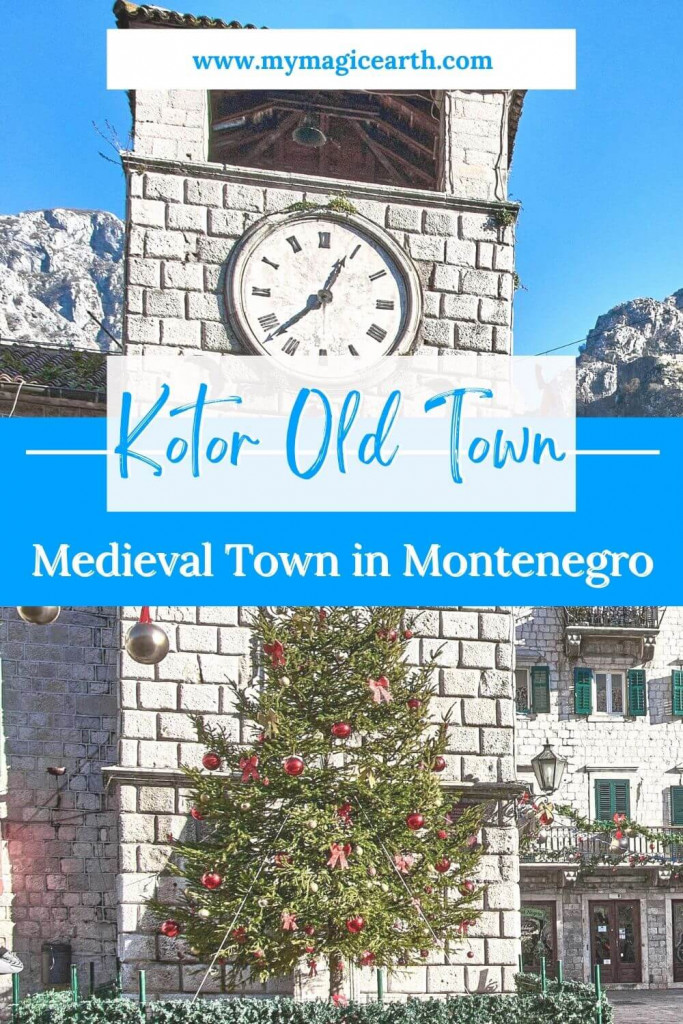Kotor in Montenegro is one of the best kept medieval towns along the Adriatic coast. The Old Walls, skillfully crafted into the steep slopes of St. John’s hill, are fortification masterpieces. These walls are Due to its well-preserved architecture and seamless integration of the town with the natural landscape, Kotor has been a Unesco World Heritage Site since 1979.
Located on one of the world’s most beautiful bays, Kotor as a cruise harbor attracts many tourists from the busy cruise harbor, Dubrovnik, Croatia. Many cruise passengers can take a day trip to Kotor easily by joining a tour.
Why Kotor is so unique
When we were back from Cetinje via Kotor Serpentine the other day, the roadside views left us a strong impression. It was one of the wondrous sights in the world.
Kotor is not about beauty but also about its history. The town has many names in history, such as Katareo, followed by Dekatera, Dekaderon, Katarum, and others. It is unclear how Kotor was established. But the common information is that the Greeks were the first settlers. During the Nemanjić dynasty of 1185-1371, as a Serbian state, Kotor reached its most prosperous status. Later, in 1918, the Bay of Kotor and Montenegro became part of Yugoslavia.
In history, seafaring, artistry, weaponry, and goldsmithing were popular trades in Kotor. Besides, historical figures such as Fra Vito, the architect of the Monastery Dečani, countless sea captains, diplomats, publishers, and poets had made Kotor the cultural heritage site.


The clock tower in Kotor old town
The town has three gates. We entered from the Sea Gate, the main entrance of the Kotor old town. The center has a labyrinth of shady cobbled streets, peaceful squares, graceful old buildings, and narrow dark alleyways.
You would not miss the clock tower, one of Kotor’s monuments. It was built in 1602 and was not finished when the earthquake in 1667 took place. As a result of that occasion, the tower considerably inclined towards the west. Later, having attempted to put it back in an upright position, it returned to the same point after the 1979 catastrophic earthquake.


The Churches
The Cathedral of Saint Tryphon (Sveti Tripun) is at the center of one square. It’s a monument of Roman culture and one of the most recognizable symbols of the city. Other monuments of medieval architecture include the Church of Saint Luke, Church of Saint Ana, Church of Saint Mary, Church of the Healing Mother of God, the Prince’s Palace, and the Napoleon’s Theatre. Without a doubt, they are all the rich heritage of Kotor. And, one of the noble palaces is the Maritime Museum now.
The pleasant atmosphere
Kotor old town is full of natural and cultural history. It is clean and decent. You would find many bars, unusual craft shops, cafes, and boutiques hidden among a maze of narrow lanes and streets. It has all the features of a medieval town. The whole area is a walking zone. During the winter season, some restaurants did not open. Most people were around the Square of Arms. Compared to Dubrovnik, this town is small but has a less commercial atmosphere.
The old town has many stories to tell. For a couple of dollars, you can join the 1-Hour Essential Walking Tour and let the locals tell you those stories.


The upper city walls
We entered the upper city walls from Kotor old town. The wall was built on cliffs and is quite steep. The first part took us roughly 15 minutes. At a chapel called Lady of Remedy, we had our short break. From there, we could already catch the bay view. The stone stairs are partially in good shape, but a pair of comfortable shoes is a must.
There are around 1400 steps to the top. After a short break, we continued negotiating the stairs. My breath came in short gasps due to elevation. A thin layer of sweat soon covered my body. But the locals were jogging up and down in a relaxing tempo. All of them kept their breath steady. It took nearly one hour for us to reach the top.
We had a rest on the top to catch up our breath while enjoying the view of the old town and the Kotor bay. It was in the mid of the day. We had the best daylight take pictures of the old town. Late afternoon, on our way down, we met a few more tourists. Though it was easier to get down, we still took precaution. By all means, I would not recommend walking here in a wet condition. From the nature point of view, this part is the best of the Kotor. Nevertheless, the 5th day of our Montenegro road trip was quite exhausting.


Travel tips
Tour suggestion
Many tourists come to Kotor from Dubrovnik. There are many day trips including different activities and places. The duration of these tours is half-day, one-day and two-day. It is worth to mention, that some tours include Perast, the most beautiful town along the Bay of Kotor.
Where to stay
There are many accommodations in and around Kotor. If you prefer to stay in the centre of the old town, I would suggest the Hotel Villa Duomo. Its rooms are decorated with traditional handcrafted furnishings.
How to get there
If you arrive at Dubrovnik Airport, you can take a taxi to Kotor. From Tivat Airport ta taxi costs only a few Euros. In case you arrive at Podgorica Airport, there are buses to Kotor year around.
Buses run between Kotor and the following cities: Podgorica, Bar, Dubrovnik, Mostar, Split, Sarajevo, Belgrade, and Skopje.
It is also possible to drive to Kotor from the capital of Montenegro, Budva or other neighbouring towns. You need to be aware of the speed limit.



